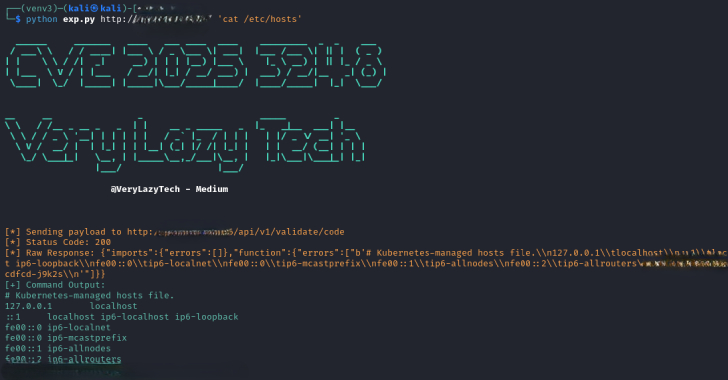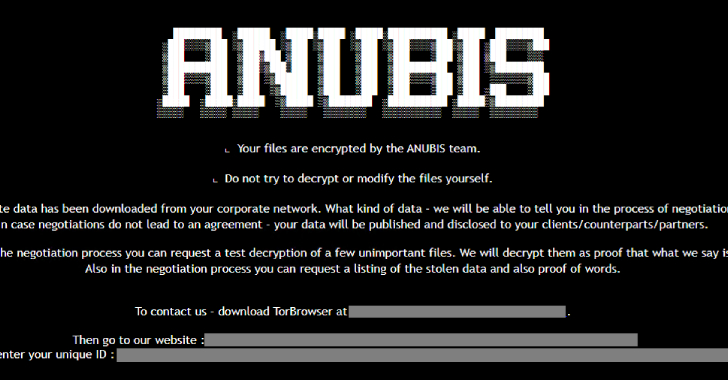“Cyber warfare is as much about psychological strategy as technical prowess.”
― James Scott
-

New Flodrix Botnet Variant Exploits Langflow AI Server RCE Bug to Launch DDoS Attacks [email protected] (The Hacker News)
Cybersecurity researchers have called attention to a new campaign that’s actively exploiting a recently disclosed critical security flaw in Langflow to deliver the Flodrix botnet malware. “Attackers use the vulnerability to execute downloader scripts on compromised Langflow servers, which in turn fetch and install the Flodrix malware,” Trend Micro researchers Aliakbar Zahravi, Ahmed MohamedRead More
-

TP-Link Router Flaw CVE-2023-33538 Under Active Exploit, CISA Issues Immediate Alert [email protected] (The Hacker News)
The U.S. Cybersecurity and Infrastructure Security Agency (CISA) on Monday added a high-severity security flaw in TP-Link wireless routers to its Known Exploited Vulnerabilities (KEV) catalog, citing evidence of active exploitation. The vulnerability in question is CVE-2023-33538 (CVSS score: 8.8), a command injection bug that could result in the execution of arbitrary system commands whenRead…
-

Meta Starts Showing Ads on WhatsApp After 6-Year Delay From 2018 Announcement [email protected] (The Hacker News)
Meta Platforms on Monday announced that it’s bringing advertising to WhatsApp, but emphasized that the ads are “built with privacy in mind.” The ads are expected to be displayed on the Updates tab through its Stories-like Status feature, which allows ephemeral sharing of photos, videos, voice notes, and text for 24 hours. These efforts are…
-

U.S. Seizes $7.74M in Crypto Tied to North Korea’s Global Fake IT Worker Network [email protected] (The Hacker News)
The U.S. Department of Justice (DoJ) said it has filed a civil forfeiture complaint in federal court that targets over $7.74 million in cryptocurrency, non-fungible tokens (NFTs), and other digital assets allegedly linked to a global IT worker scheme orchestrated by North Korea. “For years, North Korea has exploited global remote IT contracting and cryptocurrency…
-

Anubis Ransomware Encrypts and Wipes Files, Making Recovery Impossible Even After Payment [email protected] (The Hacker News)
An emerging ransomware strain has been discovered incorporating capabilities to encrypt files as well as permanently erase them, a development that has been described as a “rare dual-threat.” “The ransomware features a ‘wipe mode,’ which permanently erases files, rendering recovery impossible even if the ransom is paid,” Trend Micro researchers Maristel Policarpio, Sarah Pearl Camiling,…
-
3 leading multifactor authentication tool providers
Compare top MFA providers Cisco, Okta and Ping Identity. Learn product features and pricing tiers, and get advice on selecting a product for your organization’s security needs.Read More
-
5 essential programming languages for cybersecurity pros
Coding is an important skill across almost every technology discipline, and cybersecurity is no exception. Learn about the top programming languages for security professionals.Read More
-

⚡ Weekly Recap: iPhone Spyware, Microsoft 0-Day, TokenBreak Hack, AI Data Leaks and More [email protected] (The Hacker News)
Some of the biggest security problems start quietly. No alerts. No warnings. Just small actions that seem normal but aren’t. Attackers now know how to stay hidden by blending in, and that makes it hard to tell when something’s wrong. This week’s stories aren’t just about what was attacked—but how easily it happened. If we’re…
-

Playbook: Transforming Your Cybersecurity Practice Into An MRR Machine [email protected] (The Hacker News)
Introduction The cybersecurity landscape is evolving rapidly, and so are the cyber needs of organizations worldwide. While businesses face mounting pressure from regulators, insurers, and rising threats, many still treat cybersecurity as an afterthought. As a result, providers may struggle to move beyond tactical services like one-off assessments or compliance checklists, and demonstrateRead More
-
Hydra password-cracking tool: How to download and use it for good
Ethical hackers, need help brute forcing passwords? Learn how to download and use the open source Hydra password-cracking tool with this step-by-step tutorial and companion video.Read More
“Security used to be an inconvenience sometimes, but now it’s a necessity all the time.”
― Martina Navratilova
